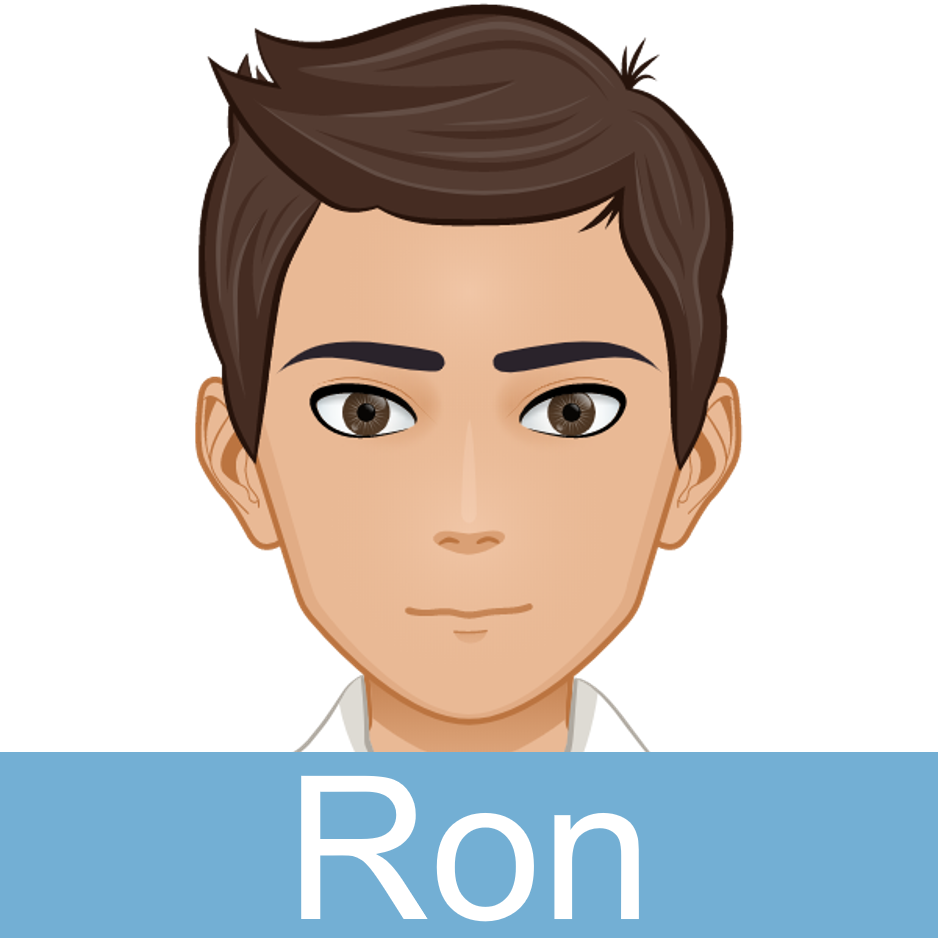PART A_1
Let’s learn new vocabulary. Listen and repeat these words with your tutor.
PART A_2
| 1. project 事業(計画)、プロジェクト | |
| This new projector can project high-quality images. | |
| 2. contrast 対比、明暗差、コントラスト | |
| The image you printed has excellent contrast. | |
| 3. compact コンパクトな | |
| The projector is convenient to use because it’s compact and lightweight. | |
| 4. generate 生む、発生させる、作り出す | |
| Her Polaroid camera can generate pictures quickly. | |
| 5. high-resolution 高解像度 | |
| We need a high-resolution photo for our advertisement. | |
PART A_3
I will ask the questions. Please answer them in complete sentences.
PART A_4
| 1. | Does your company projector project images well? |
| 2. | What is the advantage of having images with high contrast? |
| 3. | What compact equipment do you have at work? |
| 4. | Can your company printer generate high-quality images? |
| 5. | How can you determine that an image is high-resolution? |
PART B_1
Let’s read the dialogue. I will play Ron and you will play Emma. Then, we’ll switch roles.
PART B_2

Good morning, Emma. Our new projector arrived today.
|
|
That’s nice! Could you tell me more about it?
|

This new DLP projector is designed to project images with higher contrast and reduced pixelation.
|
|
It does sound wonderful! We’ll be able to see the images more clearly.
|

That’s true, and what’s good about this is that it’s compact. It’ll be easier for us to bring it to different rooms.
|
|
Now that’s just what we need. It’s convenient to use.
|

I agree, but keep in mind that employees can use this for work-related tasks only.
|
|
I will definitely relay that to my team. Thanks!
|
PART C_1
Let’s read the dialogue. Read aloud, and fill in the blanks as you remember the sentences you just read.
PART C_2

Good morning, Emma. Our new projector arrived today.
|
|
That’s nice! Could you tell me more about it?
|

This new DLP projector ______________ project images with higher contrast and reduced pixelation.
|
|
It does sound wonderful! We’ll be able to see the images more clearly.
|

That’s true, and ______________ is that it’s compact. It’ll be easier for us to bring it between different rooms.
|
|
Now that’s just what we need. It’s convenient to use.
|

I agree, but keep in mind that employees can use this for ______________ only.
|
|
I will definitely relay that to my team. Thanks!
|
PART D_1
Let’s read the new dialogue. Read aloud, and fill in the blanks with the vocabulary and expressions you learned.
PART D_2

Hi, have you seen our new laser printer?
|
|
Not yet. Could you tell me more about it?
|

Sure. This laser printer ______________ generate high-resolution images. It produces smaller dots when printing.
|
|
That’s awesome! That means the images will be less pixelated.
|

Yes, that’s right. What’s ______________ that it prints quickly unlike our old printer.
|
|
That’s handy, especially when we have to print many images.
|

Definitely. But employees ______________ for work-related purposes only.
|
|
Of course. We shouldn’t use it for personal means.
|
PART E_1
Let’s do a roleplay. Talk with me according to the situation below, using the expressions you just learned.
PART E_2
Your company recently purchased a new digital photocopy machine. Introduce the features of the equipment to your tutor, who will pretend to be your colleague.
PART E_3
REVIEW AND FEEDBACK
Now, let us review the things that you learned in this lesson.
ではこのレッスンで学んだことを振り返りましょう。
(Please give a short feedback on how your student did in your class.)
| Grammar 文法 |
Pronunciation 発音 | Vocabulary 単語 |
Comprehension 理解 |
|
|---|---|---|---|---|
 GOOD GOOD |
文法の誤りはほとんどなく、完全な文章で話すことができる | ほとんどの単語をはっきりと正しく発音することができる | 習った表現を適切に使うことができる | 文章を理解し、質問に正しく答えることができる |
 FAIR |
文法の誤りはあるが、完全な文章で話すことができる | 発音の練習が必要な言葉がいくつかある | たまにミスはあるが、習った表現を適切に使うことができる | 文章を完全に理解するのは難しく、質問に正しく答えられないときもある |
 POOR |
文章で話すのは難しく、単語だけで話すことができる | 発音の練習が必要である | 習った単語と表現を少しだけ使うことができる | 文章を理解するのは難しく、質問に答えるのは難しい |
